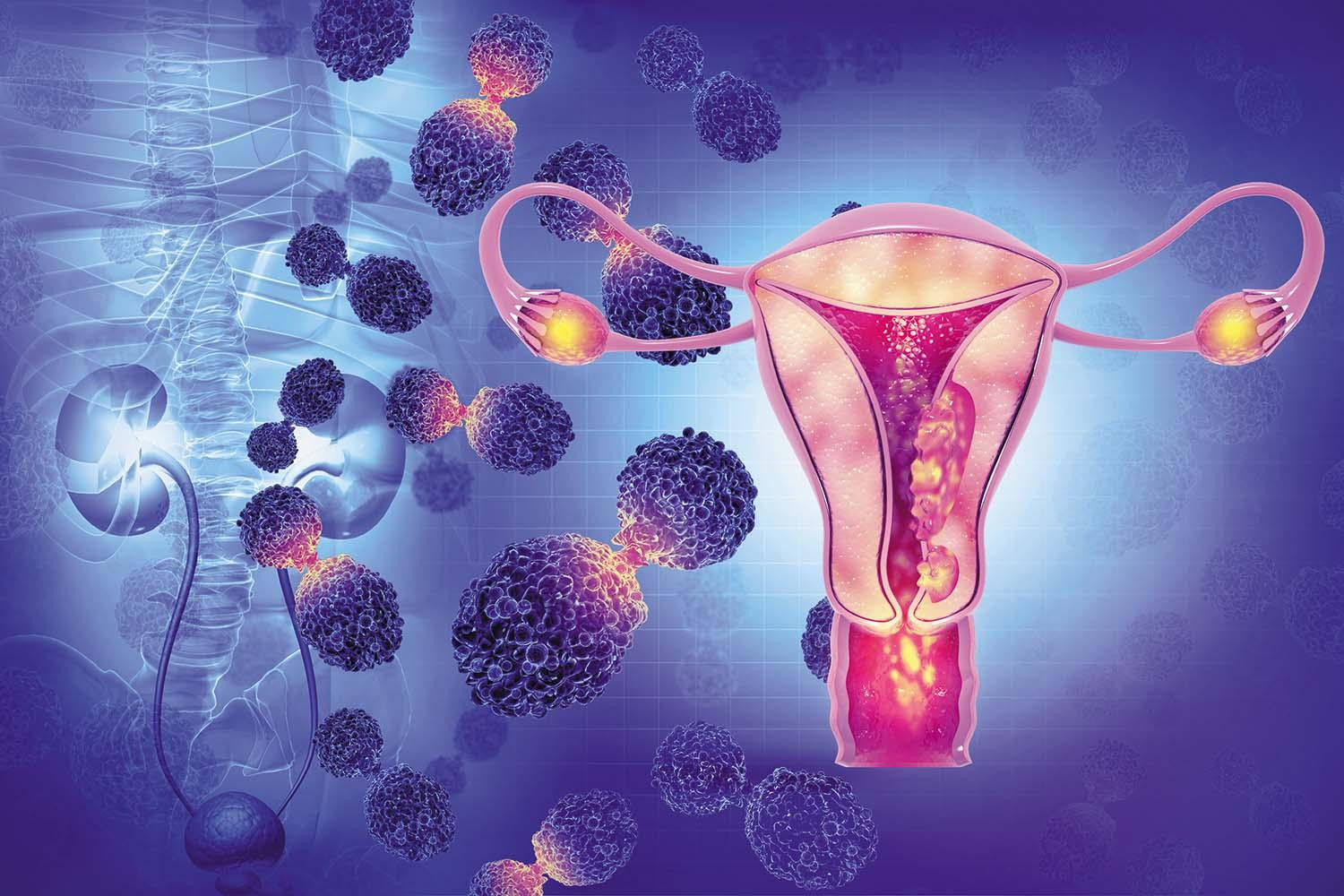What raises your risk for gynecologic cancer?
The power to protect yourself starts with understanding which risk factors are in your hands.
- Reviewed by Toni Golen, MD, Editor in Chief, Harvard Women's Health Watch; Editorial Advisory Board Member, Harvard Health Publishing; Contributor

After Dr. Katharine Esselen broke the news to one of her patients that she had vulvar cancer, which accounts for fewer than 1% of gynecologic malignancies, the woman was astounded — and perplexed. “I didn’t even know I could get a cancer down there,” she told Dr. Esselen, a gynecologic oncologist at Harvard-affiliated Beth Israel Deaconess Medical Center.
No matter the type, however, cancers of the ovaries, uterus, cervix, vagina, or vulva tend to fly under the radar because they strike far fewer women over all compared with breast cancer. But while each of these gynecologic cancers features distinct traits, they share some of the same risk factors.
“The women most worried about these cancers, compared to more common cancers like colorectal or lung cancer, are folks who had family members affected by them,” Dr. Esselen says. “But I don’t get the sense that women are always aware of their own risks.”
Disease drivers
Arming yourself against gynecologic cancer starts with understanding the risk factors for each type. Here, Dr. Esselen breaks them down.
Endometrial cancer. Also called uterine cancer, this form originates in the endometrium, the lining of the uterus. It’s the most common gynecologic malignancy, diagnosed in more than 69,000 American women each year, according to the American Cancer Society (ACS).
Endometrial cancer is one of the few types of cancer that’s killing more women than before. From 2013 to 2022, the death rate rose by 1.5% per year, according to the ACS. The most likely reason for that is increasing obesity rates, since fat tissue “holds” more estrogen, which overstimulates the uterine lining. Other risk factors include diabetes — which affects increasing numbers of Americans — and certain types of hormone therapy that don’t combine estrogen with progesterone. “That’s a huge risk factor,” Dr. Esselen says. “Most hormone therapy, done properly, combines both.”
Ovarian cancer. One of the leading causes of cancer deaths among women, ovarian cancer is diagnosed in nearly 21,000 Americans each year and typically goes undetected until it becomes advanced — and especially lethal, according to the ACS. There’s still no reliable screening test for women at average risk, meaning ovarian cancer is typically detected after the woman notices symptoms, such as bloating, pelvic pain or discomfort, urinary or bowel changes, and back pain. By then, the disease has often already spread. The top risk factor is family history.
“While it’s less common than endometrial cancer,” Dr. Esselen says, “it’s much more life-threatening because of the advanced stage at which it’s usually caught. While treatments are often initially effective, very few will cure the disease.”
Cervical cancer. Diagnosed in about 13,300 women in the United States each year, cervical cancer is most often diagnosed at early stages, when it can be treated most effectively. The vast majority of cases are caused by human papillomavirus (HPV), which is spread through sexual contact.
Cervical cancer is the only gynecologic cancer boasting two effective screening tools — Pap smear and HPV testing — as well as a preventive vaccine (which, while not routinely recommended after age 26, is FDA-approved for people up to age 45 in certain cases). Many women don’t realize they’re still at risk of developing it as they get older and stop ongoing screenings too soon, Dr. Esselen says.
Vaginal and vulvar cancers. Much less common than other gynecologic malignancies, both of these forms are also linked to HPV, as well as to smoking. Since there’s no screening test, detecting vaginal or vulvar cancers relies on staying vigilant for early symptoms, which can include pain, discomfort, itching or burning, bumps or rashes, or changes in skin color or texture.
“They’re much more rare, but more common among postmenopausal women who’ve stopped going to the gynecologist,” Dr. Esselen says. “Even if you’ve had a hysterectomy, a doctor should be taking a look at the skin there once a year.”
Guard against gynecologic cancerYou can’t change your family history, but many risk factors for gynecologic cancer are well within our control. Dr. Katharine Esselen, a gynecologic oncologist at Beth Israel Deaconess Medical Center, offers this advice on lowering your risk: Maintain a healthy weight. This reduces your odds of developing uterine cancer and can also help you better detect early, subtle signs of ovarian cancer. “When women lose weight, we also see much better responses to treatment for endometrial cancer and lower rates of recurrence,” Dr. Esselen says. Continue exams and testing. Stay current on Pap and HPV tests to detect cervical cancer early. And while some older women might be inclined to stop getting annual pelvic exams, resist that urge. “One of the biggest misconceptions women have is that once they’re done having kids or have gone through menopause, a pelvic exam is no longer relevant,” she says. “In my practice, I recommend a pelvic exam as part of a woman’s routine health maintenance.” If you smoke, quit. Tobacco use can lower the body’s ability to eliminate human papillomavirus (HPV), which is responsible for most cases of cervical and vulvar cancers. “It’s harder for smokers to clear HPV from their bodies, so quitting can help,” she says. Ward off HPV. Using condoms can greatly lower your odds of contracting the virus. And if you’re 45 or younger, talk to your doctor about getting vaccinated. Watch for unusual symptoms. Vaginal bleeding after menopause is a major sign of uterine cancer, so even a drop should be brought to your doctor’s attention. If you’re younger, you should also tell your doctor about irregular periods or abnormal vaginal discharge. Pelvic pain or discomfort, as well as bloating, can signal ovarian cancer, and a rash, strange bumps, sores, or discoloration may suggest vaginal or vulvar cancers. Consider genetic testing. If you have a strong family history of breast, ovarian, or endometrial cancer, or if multiple family members have been diagnosed with cancer, especially at younger ages, genetic testing may be wise. Mutations in the BRCA1 or BRCA2 genes drastically increase the likelihood of ovarian and breast cancer. Other mutations—such as those that signal an inherited condition called Lynch syndrome—raise the likelihood of several types of cancer, including endometrial, ovarian, and colorectal. A genetic counselor can walk you through the steps. If testing shows you’re predisposed to endometrial or ovarian cancer, you may choose to undergo risk-reducing surgery to remove the ovaries, fallopian tubes, or uterus after childbearing or menopause. “If you’re considering testing, it’s a good idea to try to find out if your affected relatives had genetic testing, because that can influence whether you pursue testing or for which genes,” Dr. Esselen says. “Genetic counselors are best equipped to guide you in this decision.” |
Image: © Mohammed Haneefa Nizamudeen/Getty Images
About the Author

Maureen Salamon, Executive Editor, Harvard Women's Health Watch
About the Reviewer

Toni Golen, MD, Editor in Chief, Harvard Women's Health Watch; Editorial Advisory Board Member, Harvard Health Publishing; Contributor
Disclaimer:
As a service to our readers, Harvard Health Publishing provides access to our library of archived content. Please note the date of last review or update on all articles.
No content on this site, regardless of date, should ever be used as a substitute for direct medical advice from your doctor or other qualified clinician.
















